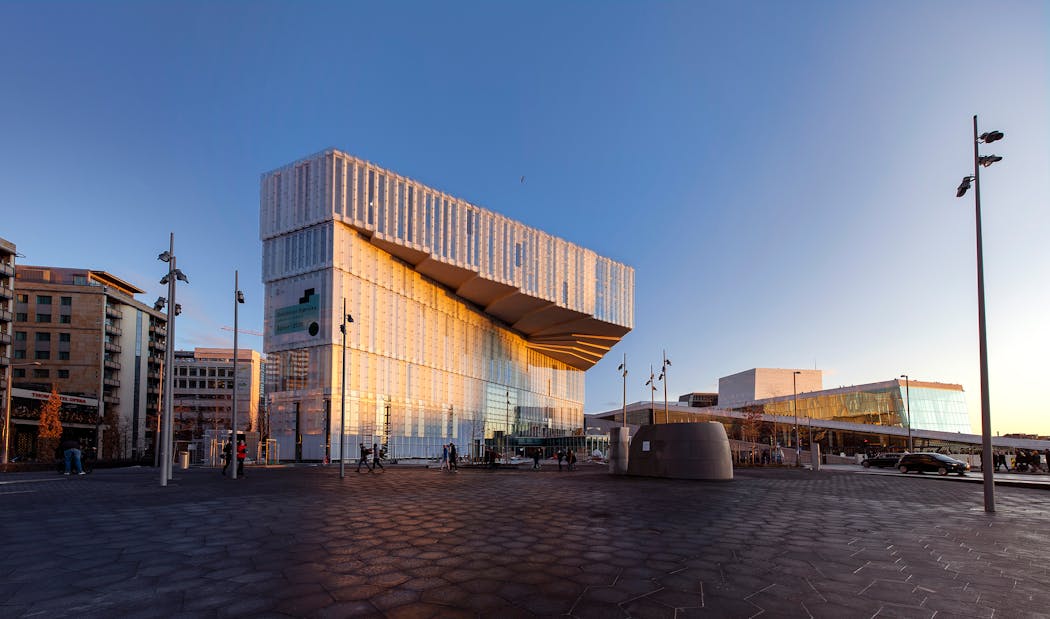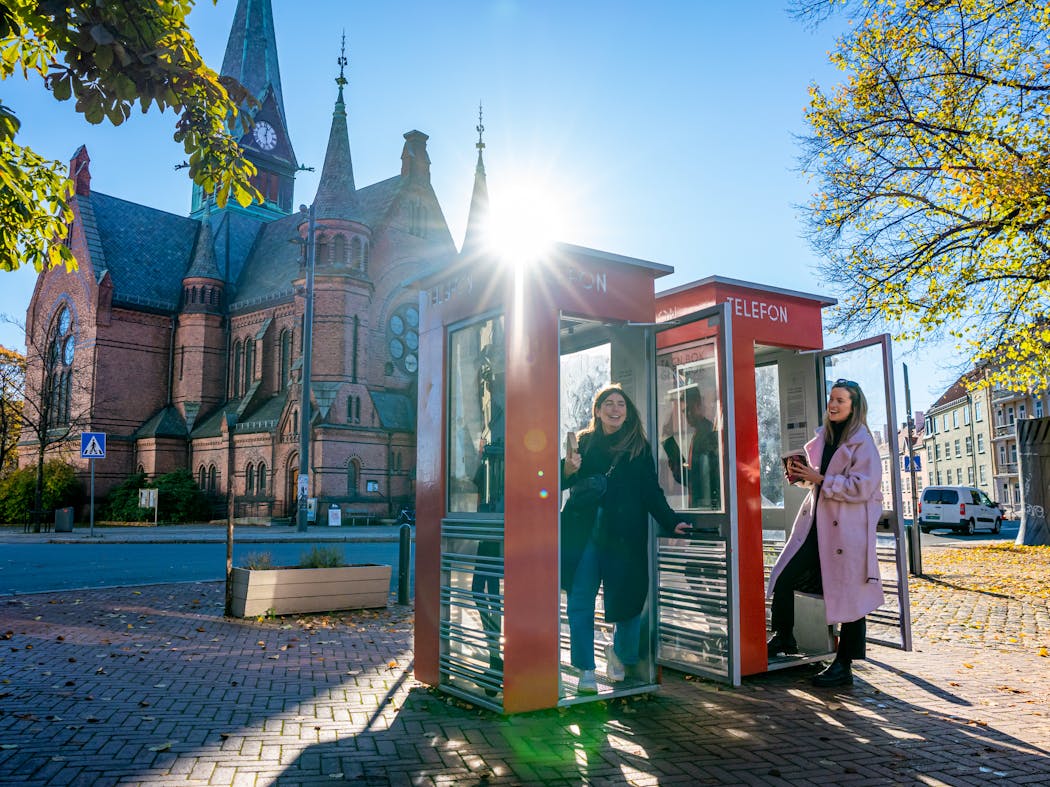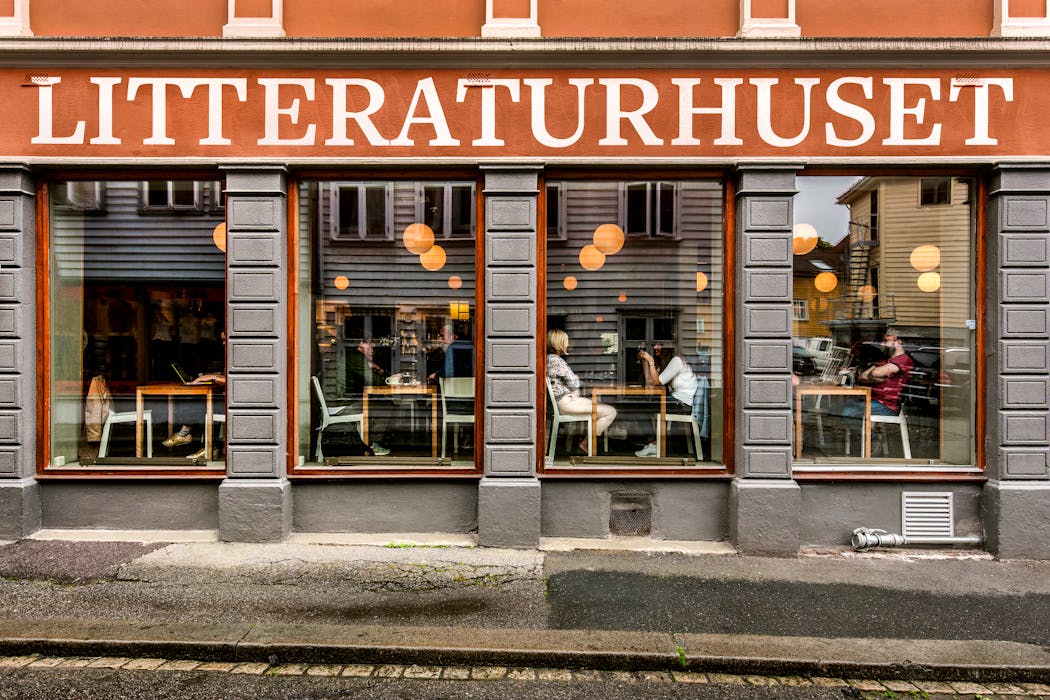Our fair state has been again dubbed "The Minnesota Miracle" following the recent legislative session. So I went back to Norway in May to see how we stack up against our cultural cousin.
I was doing a reading tour of my books and co-leading a group from Minnesota to visit the three largest cities of this social democratic country with roughly the same population and its famous "Nordic Model" of government.
Since Minnesota has by far the most Norwegian Americans of any U.S. state — around 800,000 — I wanted to see if we lived up to its Scandinavian ideals.
Safe in Oslo
Everyone was outside in Oslo, since the weather was wonderful after a long, dark winter. Slightly larger than Minneapolis, Oslo didn't have any homeless encampments that I noticed, but for the first time, I saw panhandlers in Norway. Oslo's homeless numbers are estimated at 1,526, whereas Hennepin County counted 487 homeless and 2,191 living in shelters on a given night in 2022.
Residents Knut and Inger Bull assured me that Oslo is safe. When their daughter Ada was 13, she traveled alone around the city on trams, buses and even ferries to visit friends. While Minneapolis had 81 homicides in 2022, all of Norway had only 29 that same year — despite all the violence in Nordic noir books.
While felons in Minnesota can now vote after they've served their time, Norwegians never lose their right to vote, even if they're in prison.
Knut and Inger took me to the new Oslo Public Library with its stacked-book look that competes with its neighbor, the Snøhetta-designed, glacier-inspired Oslo Opera House. Inger, a librarian, told me that at the library's inauguration, "hundreds of children from all over Oslo filled their wagons with books and had a big parade to the new library. This way, it was their library and it's always full of people and books." The library doubles as a craft workshop with sewing machines, 3-D printers and hand tools for making homemade books.
Knut and Inger own a car, but rarely use it unless they travel to their cabin in Telemark. My cousin Ole Magnus, who lives in Oslo, said, "There's no reason to have a car unless you have kids or live in northern Norway." A gallon of gas costs about $8 — ironic considering Norway is one of the world's largest oil exporters.
While Minnesota has vowed to have 100% carbon-free energy by 2040, Norway has set its goal for 2030, and already 80% of car sales are electric vehicles. By 2025, all new cars must be electric vehicles.
Mostly, though, people walk. "We have no school buses, so kids must walk or take the regular bus to school," our guide in Oslo, Marianne, told me.
The co-leader on the trip, Magne Hatlevik, added, "My dad was a bus driver, but I still had to walk 2 miles to school — uphill both ways!"
Big-hearted benefits
We took the train to Trondheim, where I was a student 19 years ago. Tuition was free for me, but Norway has started charging for students outside of the European Union. Minnesota, on the other hand, will offer free public college tuition for families earning less than $80,000 per year starting in 2024.
When we lived here, my wife gave birth and Norway's universal health care paid all the bills. If she had been working, she would have gotten 42 weeks off at full pay (now 52 weeks). By comparison, Minnesota guarantees 12 weeks of paid family and medical leave.
The Norwegian government helps parents by depositing between $1,200 and $1,800 annually per child directly into their bank accounts. Minnesota surpasses Norway with a child tax credit of up to $1,750 for the lowest incomes, with another $2,000 from the federal government.
I had assumed that Norway's famous barnehager, or kindergarten, was all paid for along with meals for the kids. Nope. Minnesota, on the other hand, provides free all-day kindergarten and free breakfast and lunch to all public school students.
Out with the old
Each time I return to Norway, I jet 10 years into the future. Trondheim has the world's first driverless passenger ferry to cross the river. Push a button and the autoferry carries you across.
Several busy roads now use tunnels, making Trondheim more pedestrian-friendly. Imagine if St. Paul's proposal to cover part of Interstate 94 were extended all the way through Minneapolis? No more noise, plowing or a gash through our cities. "New tunnels and bridges are paid for by tolls," Magne told me. "Once it's paid off, the toll goes away, unlike in the U.S., where they collect tolls essentially forever."
Riders on the extensive public transportation use only a credit card or phone to pay. Rarely do restaurants accept cash. Herman at the Litteraturhuset (House of Literature) in Trondheim told me he hasn't used cash in 10 years and never even uses his credit card, just his phone. I showed him a personal check. He held it carefully as if it were a fragile Viking sword. "How do they work?"
At a formal Syttende Mai feast, my host Per Schrøder showed me a phone on his desk. "It's impossible to use since there are no more landlines," he told me. "We took out all the telephone poles." The classic red Norwegian phone booths have been converted to Little Free Libraries.
"We've buried all the lines," Trondheim native Tom Kvalø added. He told me these new lines of communication made traditional mail obsolete.
"The post only comes twice a week," Per added, as if this were progress. "The problem is that a letter used to arrive in about two days. Now it takes more than a week!"
Rebels and rule-followers
At the Litteraturhuset in Bergen, I asked a group why Norway seems to be so prosperous. "It's because we're all equal!" a middle-aged woman proclaimed.
Knut Bull had warned that the danger of egalitarianism in Norway is conformity. Houses in Norway can be painted only certain colors, typically rich yellow, red or white; however, a housing cooperative in Trondheim recently voted that all its houses had to be painted dark gray, despite protests.
Strict local rules now prohibit fishermen from selling right off their boats at the famous Bergen waterfront to avoid competing with the fancy new fish restaurants. "It's a fish market where you can't sell fish!" our Bergen guide Renato told me. He then whispered conspiratorially: "To get by the system, a website lists where you can find out when the boats are coming in on the pier further out."
This penchant for rules following makes for safer roads, however. The blood alcohol limit for drivers is 0.02%, which is one-fourth of Minnesota's. The fine for talking on a cellphone while driving is $900, as opposed to $50 in Minnesota. Cameras check speeders along the road and will mail a ticket with a photo of the driver.
And while Minnesota recently legalized recreational marijuana, in Norway cannabis remains legal only for medical purposes.
After my reading at Litteraturhuset, I stepped out on the safe streets of Bergen. As I walked on the slick cobblestones by the historic wharf, I felt pleasantly surprised about how close the Minnesota Miracle is getting to this Nordic Model.
Eric Dregni is a professor at Concordia University and author of "For the Love of Cod," "Never Trust a Thin Cook" and "Vikings in the Attic."




